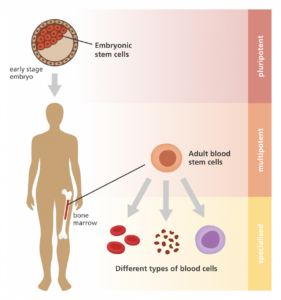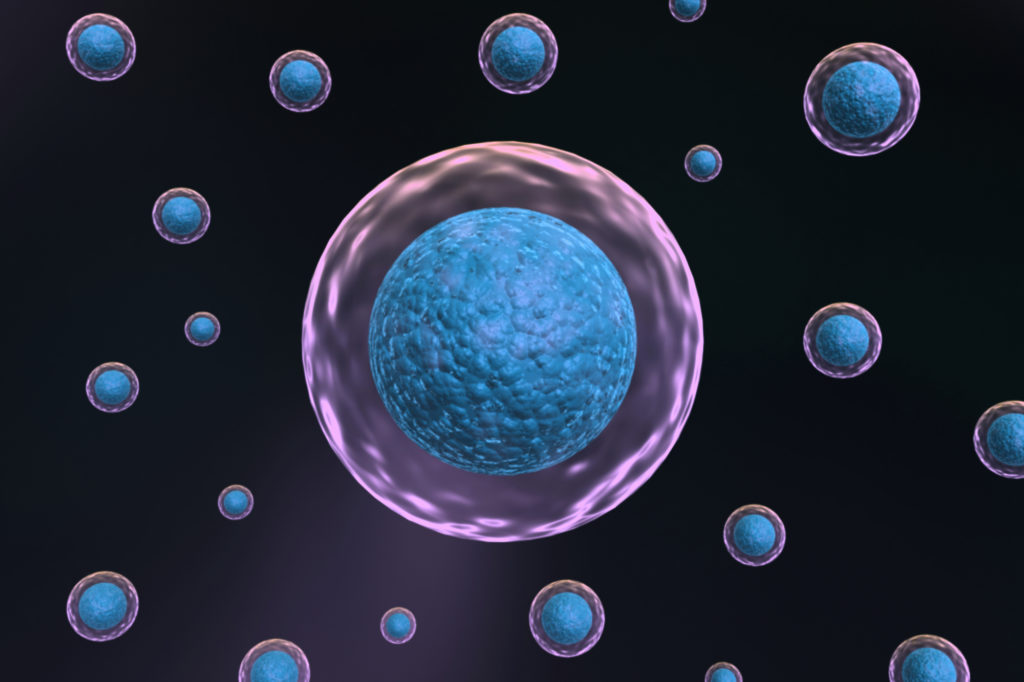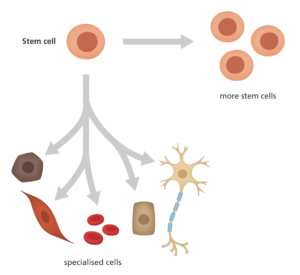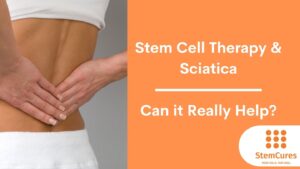How Do Stem Cells Work?
Over the last twenty years, stem cell therapy has become an increasingly more common and, at times, a controversial form of treatment for patients who suffer from chronic pain as well as several other medical conditions. A lot of misinformation has led to several myths surrounding stem cell treatments, and many prospective patients still don’t understand how stem cell therapy works. Developing an understanding of what stem cell treatment really is and how it can be effective in the body can help patients decide if and when stem cell treatment might be a good option for pain management. In this comprehensive article, we will dive deeper and answer the question of how do stem cells work?
What are Stem Cells?
As described by Mayoclinic, stem cells are:
“Stem cells are the body’s raw materials — cells from which all other cells with specialized functions are generated. Under the right conditions in the body or a laboratory, stem cells work by dividing to form more cells called daughter cells.”
An illustration showing how stem cells work and become specialized cells
Stem cells, sometimes referred to by their nickname, “master cells” are essentially the building blocks of the human body; they are foundational material that can develop into a wide range of cell forms, each with its own set of specialized functions. Each “master cell” produces “daughter cells” that can turn into organs, blood, bone, and muscle, all with the ability to repair damaged tissue. Stem cells are able to self-renew, meaning that they can turn themselves into brand new stem cells, as well.
Unlike other cells in the body, stem cells work by having the ability to create new cell types. The goal of stem cell therapy is for scientists to take this invaluable power that stem cells wield and use it to create treatments for all types of health conditions and illnesses.
What are the Different Types of Stem Cells and How Do They Work?
Stem cells fall into four different types:
- embryonic stem cells
- adult stem cells
- induced pluripotent stem cells
- perinatal stem cells
While each type of stem cell has different uses, adult stem cells, which are drawn from the patient’s own fat or bone marrow, are the kind used in stem cell therapy. Adult stem cells are known to be less versatile than other types of stem cells, but they are also less controversial, as they are taken from the patient with the patient’s consent. Still, adult stem cells have shown tremendous effectiveness in treating all types of pain-related issues in patients.

An illustration showing different types of stem cells in the body.
Image credit: Genome Research Limited
How Can Stem Cells be Used?
Stem cells offer the possibility of exciting new treatments for many different conditions due to their self-renewing qualities and ability to stimulate tissue healing.
There are three main ways that stem cells can be used:
- Stem Cell Research
- Drug Development
- Stem Cell Therapy
Stem Cell Research
Scientists use stem cells to study and observe disease development. Scientists can observe the early-stage cells watching the mature and develop into different types of cells giving an excellent view of how certain conditions and diseases can arise.
Drug Development
Stem cells are used to test drugs for safety and efficacy. Using human stem cells allows researchers to observe the effects of drugs without using live test subjects. As the human stem cells develop into their desired form, data can be collected on how those cells receive the drug.
Stem Cell Therapy
When used to treat pain relief, stem cell therapy begins by aspirating stem cells from the patient’s body, which are found in fat and/or bone marrow. From there, stem cells are administered as one of four types of injections: intravenous injections, intra-articular, intramuscular, or through an intrathecal procedure, more commonly referred to as a lumbar puncture. The procedure selected for each patient is dependent upon the location of their pain and inflammation.
Why is Stem Cell Therapy Growing in Popularity?
One reason that stem cell therapies have become so popular over other forms of treatment for pain is that it is performed in a minimally invasive, non-surgical procedure. Most of the time orthopedic stem cell treatments are administered in an office or clinical environment and the procedure itself typically takes no more than ninety minutes. Stem cell treatments are relatively painless, especially when compared to surgical options.
Most patients experience minimal side effects which may include fatigue, headaches, fever, chills, and nausea shortly after treatment. Generally speaking, these side effects dissipate in just a few hours, however it is recommended that patients prepare to take one week off from work following the procedure for the best possible recovery. Additionally, patients are encouraged to cut down on activity in the part of the body where treatment is received for approximately one month after stem cell treatments.
For those considering stem cell treatments, it’s important to understand that there are two types of stem cell therapies: those approved by the FDA and those that are not. FDA-approved stem cell therapies are more often used as treatments for specific types of blood cancers. Patients should verify the clinic where they plan to have their procedure prior to receiving any stem cell treatment to ensure that they use exclusively bone marrow stem cells, as those are the only ones approved for use by the FDA.
How Long Can I Expect Stem Cell Therapy to Work For?
Stem cell technology has the capability to create unparalleled results for patients experiencing chronic pain despite the fact that it is still a relatively new form of treatment. Success rates for a number of clinical trials are as high as 70 to 80% of patients enjoying significant improvement.
Though stem cell treatments are not able to cure injuries or inflammation, it has been proven to help alleviate pain by facilitating the body’s own healing abilities so that the pain becomes more manageable. Patients will continue to generate new cells in their bodies up to one year after undergoing treatment and some patients notice decreased pain in as little as two weeks. Others may take several weeks or even months to begin to feel relief. Typically physical therapy is recommended for patients who have received any form of stem cell injections in order to speed up the healing process.
Even though stem cell therapy is universally recognized as highly effective for patients with all different kinds of pain, the long-term outcomes differ from patient to patient. For example, patients experiencing arthritis have reported results lasting anywhere from six months to several years. On average, patients experience five to ten years of pain relief, though some clinical trials report patients experiencing up to fifteen years of relief. If necessary, it is possible to repeat stem cell procedures in the future.
What Side Effects Can I Expect from Stem Cell Therapy?
While many people think of stem cell therapy as a miracle treatment, it is important to keep in mind that it is not entirely without risk. People living with chronic illness, infections, active cancers, or blood disorders may have less favorable reactions to stem cell therapy. That said, the use of a patient’s own stem cells greatly reduces the chances of a patient developing any undesirable reactions. For those who have concerns about their eligibility for stem cell therapy, it may be beneficial to schedule a consultation with a physician before moving forward with any type of stem cell procedure.
Though there has been much conflicting information circulating about stem cell therapy, understanding how it actually works and what patients can expect is the first step toward achieving long-lasting pain relief. Stem cell therapy is overwhelmingly safe, effective, and minimally invasive for treating chronic pain. Stem cell technology is still quite young, but we are already beginning to see it take off all around the world, providing improved quality of life for so many patients. Stem cell therapies unlock limitless possibilities for recovery and relief not only for adults battling chronic pain worldwide but for those suffering from all types of illnesses and health conditions. Thanks to stem cell research, the future can be relatively pain-free.
How Do Stem Cells Work for Chronic Pain?
At StemCures, we use your own body’s natural stem cells, also called adult stem cells to treat orthopedic and osteoarthritis chronic pain. We fully believe in the power of these adult stem cells as they are of course are derived from your own body.
Many of our patients have had successful operations and a significant decrease in their chronic pain. To view some of our client testimonials, visit our testimonials page.
For more information on our practice and if we may be able to help with your chronic pain, please contact our helpful team today to see if treatment is right for you.














